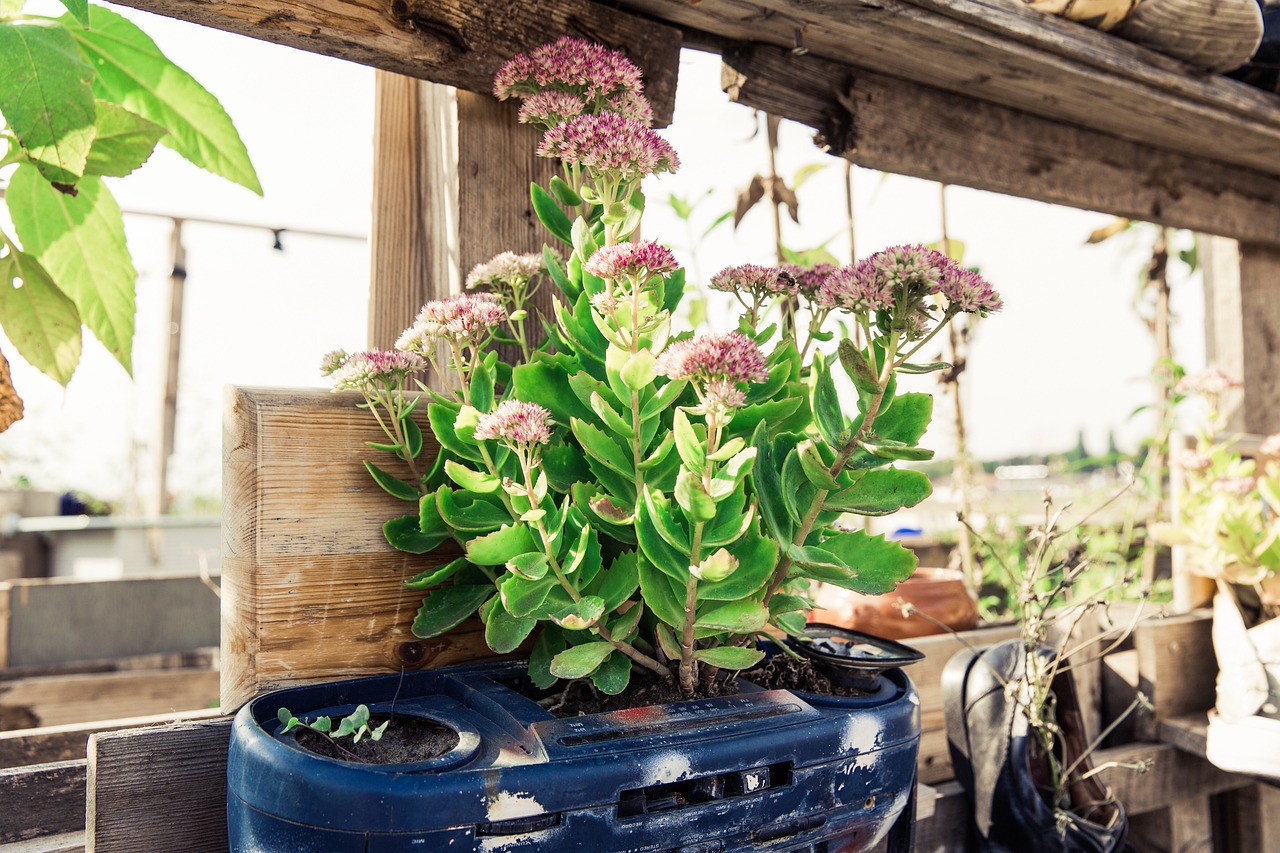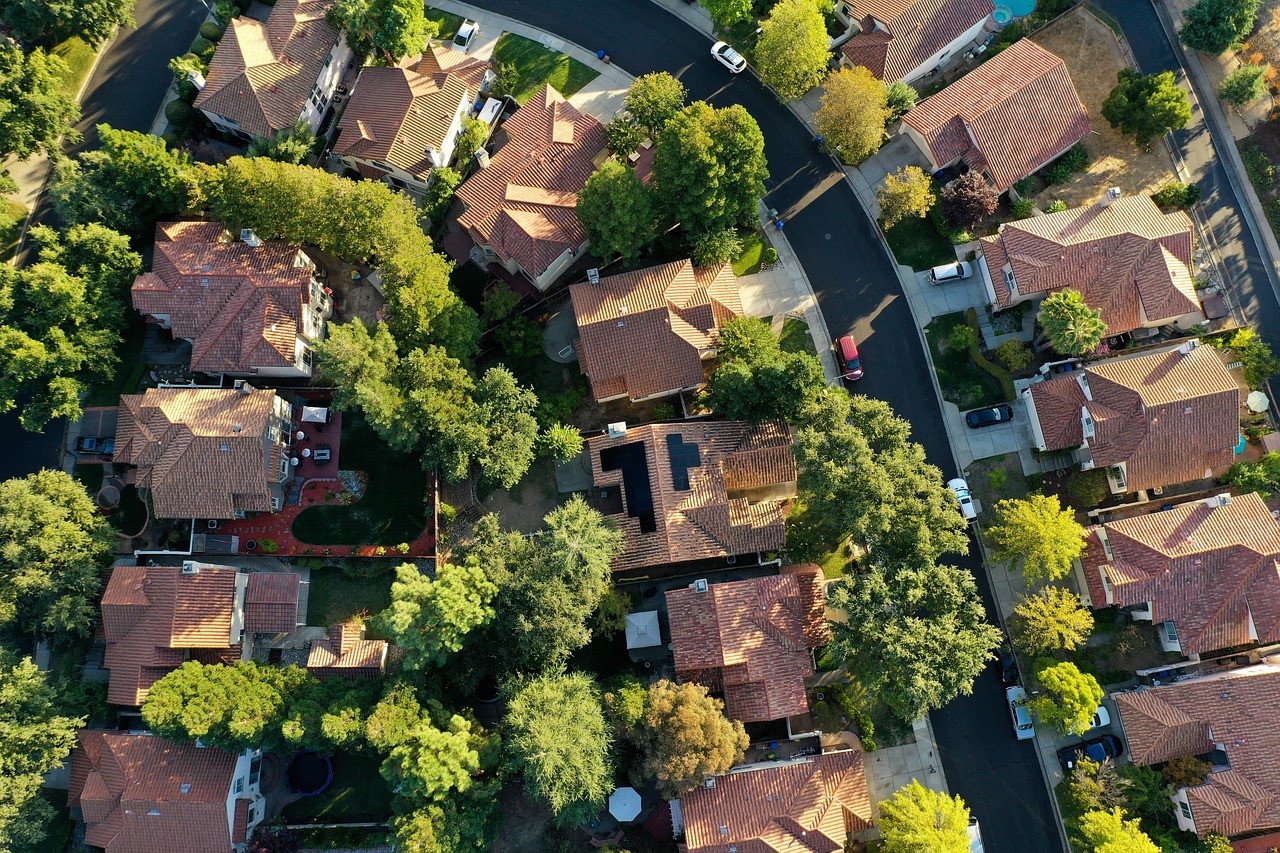In today’s rapidly changing world, the call for sustainability is louder than ever. It’s not just a buzzword; it’s a movement that demands our attention and action. So, how can you, as an individual or part of a group, spark meaningful change in your community? The answer lies in understanding the power of collective action and the small steps that can lead to monumental shifts. Think of it like planting a seed; with the right care and attention, that seed can grow into a mighty tree, providing shade and shelter for generations to come.
When we talk about sustainability, we’re addressing a triad of crucial elements: environmental well-being, social equity, and economic viability. Each of these aspects interlinks to form a balanced ecosystem that supports not just our present, but also the future. Imagine your community as a tapestry, where each thread represents a different facet of sustainability. If one thread weakens or frays, the entire fabric can suffer. Therefore, it’s vital to weave these threads together, fostering a culture of sustainability that resonates throughout your community.
But where do you start? The first step is to understand your community's unique challenges. Every community is different; what works in one area may not be effective in another. This is where the magic of local engagement comes into play. By assessing the specific needs and priorities of your community, you can tailor your sustainability initiatives to address the most pressing issues. This isn’t just about making changes; it’s about making the right changes that will have a lasting impact.
To kick off your journey towards sustainability, consider conducting community surveys. Surveys are a fantastic way to gather valuable insights directly from your neighbors. They can help you understand what sustainability means to different people in your community and what issues they feel are most urgent. But remember, a survey is only as good as its design. Focus on clear, concise questions that encourage honest feedback. This is your chance to hear the voices of your community, so make it count!
Next, engaging local stakeholders is crucial. This means reaching out to community members, businesses, and organizations. Think of it as assembling a team for a project; the more diverse your team, the richer the ideas and solutions you can generate. Organize community meetings or workshops where people can come together to discuss sustainability. This collaborative approach not only fosters a sense of ownership but also encourages innovative thinking.
Once you’ve gathered your data, the next step is to analyze the survey results. This is where the real work begins. Look for patterns and themes that emerge from the data. What are the common concerns? Are there specific areas where people feel action is needed? By interpreting this information effectively, you can develop strategies that are informed by the actual needs of your community.
Now that you have a clearer picture of your community's needs, it’s time to focus on raising awareness and education. Knowledge is power, and by educating your community about sustainability, you can inspire action. Consider launching educational campaigns that highlight the importance of sustainable practices. Workshops, seminars, and community events can serve as platforms for sharing information and encouraging participation. The goal is to create an environment where sustainability becomes a shared value.
As you embark on this sustainability journey, remember that practical actions can lead to significant change. From community gardening initiatives that promote local food production to waste reduction programs that encourage recycling and composting, there are countless ways to make a difference. Each small action contributes to a larger movement, and together, these actions can transform your community into a model of sustainability.

Sustainability is a multifaceted concept that aims to create a balance between environmental health, social equity, and economic viability. At its core, sustainability is about meeting the needs of the present without compromising the ability of future generations to meet their own needs. This delicate balance is crucial, as it ensures that our planet remains a livable place for all forms of life. Imagine a three-legged stool; if one leg is shorter than the others, the whole structure becomes unstable. In the same way, neglecting any dimension of sustainability can lead to a collapse of our ecosystems and communities.
When we talk about sustainability, we often refer to three primary pillars: environmental sustainability, social sustainability, and economic sustainability. Each of these pillars plays a vital role in creating a sustainable future. Environmental sustainability focuses on the preservation of natural resources and ecosystems, ensuring that we do not deplete the planet's resources faster than they can be replenished. Social sustainability emphasizes the importance of community well-being, social equity, and cultural diversity, while economic sustainability involves creating systems that support long-term economic growth without negatively impacting social and environmental health.
Understanding the significance of sustainability is crucial, especially in today's world where climate change, pollution, and social inequalities are rampant. For instance, consider the impact of plastic waste on our oceans. Every year, millions of tons of plastic end up in our seas, harming marine life and disrupting ecosystems. By adopting sustainable practices, we can reduce our reliance on single-use plastics and promote recycling initiatives that help protect our oceans. This is just one example of how sustainability can lead to positive environmental change.
Moreover, sustainability is not just a responsibility; it is an opportunity. By embracing sustainable practices, communities can foster innovation, create jobs, and enhance the quality of life for their residents. For example, investing in renewable energy sources like solar and wind can reduce dependency on fossil fuels, lower energy costs, and create green jobs. This transition not only benefits the environment but also strengthens local economies, proving that sustainability and economic growth can go hand in hand.
In conclusion, understanding sustainability is the first step toward fostering positive change in our communities. It requires a collective effort from individuals, businesses, and governments to embrace practices that promote a balanced ecosystem. As we delve deeper into the strategies and initiatives that can evoke change, remember that every small action counts. Just like a pebble thrown into a pond creates ripples, your efforts can inspire others and lead to a larger movement for sustainability.

Identifying the unique needs of your community is a pivotal step in fostering sustainable change. Just like a gardener must understand the soil and climate before planting seeds, community leaders must grasp the specific environmental challenges and priorities their neighborhoods face. This understanding not only helps tailor initiatives effectively but also ensures that the efforts resonate with community members. After all, what good is a sustainability program if it doesn't address the actual concerns of the people it aims to serve?
One effective method for assessing community needs is through conducting community surveys. These surveys can serve as a mirror reflecting the thoughts, feelings, and desires of community members regarding sustainability. When designing these surveys, it’s essential to ask clear and concise questions that encourage open-ended responses. For example, questions like "What environmental issues concern you the most?" or "What sustainable practices would you be willing to adopt?" can provide invaluable insights.
Surveys are valuable tools for gathering insights, but they need to be crafted thoughtfully. Consider the following tips when designing your survey:
Once your survey is ready, distribute it through various channels such as social media, community centers, and local events to maximize participation. Remember, the goal is to hear from as many voices as possible.
Involving local stakeholders is also essential for successful initiatives. Think of your community as a complex ecosystem where every member plays a role. Engage diverse community members, businesses, and organizations in discussions about sustainability. Hosting workshops or town hall meetings can be a great way to encourage dialogue. During these sessions, you can present findings from your surveys and invite feedback on proposed initiatives. This not only fosters a sense of ownership but also builds a collaborative spirit among stakeholders.
Once surveys are conducted, analyzing the results is vital. This is where the real magic happens! By interpreting the data, you can identify trends and priorities that will inform your sustainability strategies. For instance, if a significant number of respondents express concern about waste management, you might prioritize waste reduction programs. Utilizing data visualization tools, like charts and graphs, can help present your findings clearly to stakeholders, making it easier for everyone to understand the community's needs.
In conclusion, identifying community needs is not just about gathering data; it's about listening to the voices of the people who live there. By conducting surveys, engaging stakeholders, and analyzing results, you can create a targeted approach to sustainability that truly reflects your community's values and priorities. Remember, the journey to sustainability begins with understanding, and that understanding can lead to transformative change.
Q1: Why is it important to identify community needs for sustainability?
A1: Understanding community needs ensures that sustainability initiatives are relevant and effective, addressing the specific concerns and priorities of residents.
Q2: How can I effectively engage local stakeholders?
A2: Hosting workshops, town hall meetings, and discussions can facilitate engagement, allowing for open dialogue and collaboration on sustainability efforts.
Q3: What should I include in a community survey?
A3: Include clear and concise questions about environmental concerns, willingness to adopt sustainable practices, and suggestions for improvement.

When it comes to driving sustainability in your community, understanding the pulse of the people is essential. This is where community surveys come into play. Think of surveys as a compass, guiding you toward the needs, wants, and priorities of your community members. By gathering insights directly from the residents, you can tailor your sustainability initiatives to be more effective and impactful. But how do you go about conducting these surveys? Let’s break it down.
First, you need to define the objectives of your survey. What specific information are you looking to gather? Are you interested in understanding the community’s awareness of sustainability issues, or perhaps their willingness to participate in local initiatives? Clearly outlining your goals will help you craft questions that are not only relevant but also engaging.
Next, consider the format of your survey. While traditional paper surveys have their place, online tools like Google Forms or SurveyMonkey can streamline the process and make it easier for residents to participate. With just a few clicks, you can reach a broader audience, and many people appreciate the convenience of completing a survey from the comfort of their own homes. Here’s a simple table to illustrate the different survey formats you might consider:
| Survey Format | Advantages | Disadvantages |
|---|---|---|
| Paper Surveys | Personal touch, can reach non-tech-savvy individuals | Time-consuming to distribute and collect |
| Online Surveys | Quick to distribute, easy data collection | May exclude those without internet access |
| Phone Interviews | Direct interaction, can clarify questions | Resource-intensive, potential for bias |
Once you’ve decided on the format, it’s time to create your questions. Aim for a mix of open-ended and closed-ended questions. Open-ended questions allow respondents to express their thoughts freely, while closed-ended questions provide quantifiable data. For example, you might ask:
After collecting responses, the next step is to analyze the data. This part is crucial, as it transforms raw data into actionable insights. Look for trends and patterns in the responses that can inform your sustainability strategies. For instance, if a significant number of respondents express concern about waste management, it might be time to launch a recycling initiative.
Lastly, don’t forget to share the results with your community! Transparency is key in building trust and encouraging future participation. Consider hosting a community meeting or sending out a newsletter to discuss the findings and outline the next steps. Engaging your community in this way not only fosters a sense of ownership but also inspires others to contribute to sustainability efforts.
In conclusion, conducting community surveys is a powerful tool for understanding and addressing local sustainability needs. By actively listening to your community, you can create initiatives that resonate, ensuring that your efforts lead to meaningful change. Remember, every voice matters, and together, we can build a more sustainable future.

Engaging local stakeholders is a fundamental aspect of fostering sustainability in any community. Think of it as assembling a puzzle; each piece represents a different group, from local businesses to schools and non-profit organizations. When these pieces come together, they create a vibrant picture of collective action and shared goals. But how do you effectively engage these stakeholders? It starts with understanding their motivations and interests.
One effective way to engage stakeholders is by organizing community forums or workshops. These gatherings serve as platforms for dialogue, allowing community members to voice their concerns and ideas. Imagine gathering in a local park, surrounded by people who share a passion for the environment, discussing how to reduce the community's carbon footprint. It’s not just about talking; it’s about listening, too. Encourage stakeholders to share their thoughts and suggestions, making them feel valued and involved in the decision-making process.
Another strategy is to create partnerships with local businesses. Businesses often have resources and networks that can amplify sustainability initiatives. For example, a local grocery store might be willing to sponsor a recycling program or provide discounts for customers who bring reusable bags. By highlighting the benefits of sustainability, such as cost savings and improved community image, you can motivate businesses to get on board. This collaboration can lead to innovative solutions that benefit both the environment and the local economy.
Furthermore, consider developing a stakeholder engagement plan that outlines clear objectives and strategies. This plan should include:
Finally, it’s crucial to recognize and celebrate the contributions of local stakeholders. Acknowledge their efforts publicly through events or social media shout-outs. This not only boosts morale but also encourages others to participate. When people see their neighbors and local businesses being recognized for their contributions to sustainability, it creates a ripple effect, inspiring more community members to get involved.
In summary, engaging local stakeholders is about building relationships and fostering a sense of ownership over sustainability initiatives. By creating inclusive spaces for dialogue, partnering with businesses, and recognizing contributions, you can cultivate a community that is not just aware of sustainability but actively participates in it. So, roll up your sleeves and start those conversations; your community's future depends on it!
Q: Why is stakeholder engagement important for sustainability?
A: Engaging stakeholders ensures that diverse perspectives are considered, leading to more effective and inclusive sustainability initiatives.
Q: How can I identify local stakeholders?
A: Look for community leaders, local businesses, schools, and environmental organizations. Networking events and community meetings can also help identify key players.
Q: What are some effective ways to communicate with stakeholders?
A: Use multiple channels like social media, community newsletters, and public forums to reach a broad audience and keep them informed.
Q: How can I measure the success of stakeholder engagement?
A: Track participation rates, gather feedback through surveys, and assess the impact of initiatives to evaluate the effectiveness of your engagement efforts.

Once you've gathered valuable insights through community surveys, the next step is to analyze the results. This phase is crucial because it helps you understand the community's perceptions, priorities, and areas of concern regarding sustainability. Think of the survey results as a treasure map; each response is a clue that leads you closer to the heart of your community's needs.
To begin analyzing the data, start by organizing the responses. You can use tools like spreadsheets or specialized software to categorize the information efficiently. Look for patterns and trends that emerge from the data. For instance, if a significant number of respondents express concern about waste management, this indicates a pressing issue that requires immediate attention. On the other hand, if many participants show interest in renewable energy, it might be a great opportunity to introduce related initiatives.
Another effective method for analyzing survey results is to employ quantitative and qualitative analysis. Quantitative analysis involves looking at numerical data, such as the percentage of respondents who favor a particular initiative. For example:
| Initiative | Support (%) |
|---|---|
| Community Recycling Program | 75% |
| Renewable Energy Workshops | 60% |
| Community Garden Projects | 85% |
On the other hand, qualitative analysis focuses on the open-ended responses where community members share their thoughts and suggestions. These insights can be incredibly valuable in shaping your sustainability initiatives. For instance, if several respondents mention the need for more educational resources about composting, this feedback can guide your next steps.
Once you have interpreted the data, it's essential to share your findings with the community. Transparency builds trust and encourages more people to participate in future surveys and initiatives. Consider hosting a community meeting or creating a report that summarizes the results and outlines proposed actions based on the feedback received. This not only keeps your community informed but also empowers them to feel involved in the decision-making process.
In conclusion, analyzing survey results is more than just crunching numbers; it’s about understanding the heartbeat of your community. By carefully interpreting and acting on the insights gathered, you can create tailored sustainability initiatives that resonate with community members and foster a culture of environmental responsibility.

When it comes to fostering sustainability in your community, awareness and education are the cornerstones of change. Think of it as planting seeds in the minds of your neighbors—once they start to grow, they can blossom into a garden of action and commitment. By educating community members about the importance of sustainable practices, you not only inform them but also inspire them to take part in initiatives that can lead to significant environmental benefits.
One effective way to raise awareness is through educational campaigns. These can take many forms, from workshops and seminars to social media campaigns and community events. For instance, consider hosting a local event where experts share insights on topics like renewable energy, waste reduction, and biodiversity. Engaging presentations can captivate audiences, making complex topics more relatable. Imagine a local farmer explaining the benefits of organic farming not just for the environment, but for community health—this personal touch can resonate deeply with attendees.
Moreover, creating informative materials such as brochures, flyers, or even a community newsletter can keep sustainability at the forefront of everyone’s minds. These materials should be visually appealing and packed with practical tips. For example, a simple guide on how to compost at home or a checklist for reducing single-use plastics can empower individuals to make small changes that collectively lead to a larger impact.
Another powerful approach is to leverage social media platforms. In today's digital age, platforms like Facebook, Instagram, and Twitter can amplify your message far beyond traditional methods. Share success stories from local initiatives, post engaging content that highlights sustainable practices, and encourage community members to share their efforts. This creates a ripple effect—when people see their friends and neighbors participating, they are more likely to join in.
Furthermore, collaborating with local schools can be a game-changer. By integrating sustainability into the curriculum, you can educate the younger generation about the importance of caring for our planet. Organizing field trips to local parks or hosting environmental science fairs can ignite a passion for sustainability in students, who, in turn, can bring that knowledge home to their families.
In addition, you might consider creating a community sustainability ambassador program. This initiative could involve training volunteers to become advocates for sustainability within their neighborhoods. These ambassadors can facilitate discussions, organize events, and guide community members in adopting sustainable practices. Imagine having a network of passionate individuals who are dedicated to spreading awareness and knowledge—this could significantly enhance your community's efforts towards sustainability.
To summarize, building awareness and education around sustainability requires a multifaceted approach. By engaging the community through events, informative materials, social media, school programs, and ambassador initiatives, you can create a culture of sustainability that thrives. Remember, every small effort counts, and together, these efforts can lead to transformative change.

When it comes to making a real impact on sustainability, it's not just about having good intentions; it's about implementing practical actions that can lead to significant change in our communities. Think of it like planting a seed. You can have all the best ideas in the world, but if you don't nurture them, they won’t grow. So, what can we do to cultivate a thriving environment? Here are some effective practices that communities can adopt to promote sustainability.
One of the most impactful ways to foster sustainability is through community gardening initiatives. These gardens not only provide fresh produce but also enhance local biodiversity and promote a sense of community. Imagine a vibrant patch of green where neighbors come together to grow vegetables, herbs, and flowers. Establishing a community garden can be as simple as transforming a vacant lot or an underutilized park into a flourishing space. To start, gather interested community members, choose a suitable location, and develop a plan that includes:
Once the garden is up and running, it can serve as an educational platform, teaching participants about sustainable practices, organic gardening, and the importance of local food systems.
Another crucial aspect of sustainability is waste reduction programs. Did you know that a significant portion of our waste could be diverted from landfills through effective recycling and composting? Implementing these programs can greatly reduce the environmental footprint of a community. Start by assessing the current waste management practices in your area, and then consider the following steps:
In addition, introducing a community composting program can significantly reduce organic waste. Residents can contribute kitchen scraps and yard waste, which can then be transformed into nutrient-rich compost for local gardens. This not only reduces waste but also enriches the soil, creating a healthier environment.
Moreover, embracing renewable energy initiatives can be a game-changer for sustainability. Communities can explore options like solar energy installations, wind turbines, or even community-based energy cooperatives. By investing in renewable energy, communities can reduce their reliance on fossil fuels, lower energy costs, and contribute to a cleaner planet. Imagine a neighborhood powered by the sun, where every home generates its own energy and contributes surplus power back to the grid.
Finally, it's important to remember that sustainable practices are not just about individual actions; they require collective effort. Engaging the community through workshops, events, and discussions can create a culture of sustainability. Encourage residents to share their ideas, successes, and challenges. By fostering open communication and collaboration, communities can create a robust support system that drives sustainable change.
Q: How can I get involved in community gardening?
A: Look for local gardening groups or community centers that offer gardening programs. You can also start your own community garden by gathering interested neighbors and finding a suitable location.
Q: What are some simple ways to reduce waste at home?
A: Start by composting food scraps, using reusable bags and containers, and being mindful of your purchases to avoid single-use products.
Q: How can I advocate for renewable energy in my community?
A: Begin by educating yourself and others about the benefits of renewable energy. Attend local council meetings, join advocacy groups, and encourage your neighbors to support renewable energy initiatives.

Community gardening initiatives are more than just a trend; they are a powerful way to bring people together while promoting sustainability. Imagine a patch of land transformed into a lush garden, where neighbors gather not just to plant seeds but to cultivate relationships. These gardens serve as a vibrant hub for community interaction, education, and environmental stewardship. By engaging in gardening, individuals can learn about the importance of local food production, biodiversity, and the impact of their choices on the environment.
Establishing a community garden begins with identifying a suitable location. This could be a vacant lot, a park, or even a schoolyard. The first step is to gather interested community members and form a planning committee. This group will help outline the garden's goals, such as growing food, creating a space for education, or enhancing local biodiversity. It’s essential to consider the specific needs of the community when designing the garden. For instance, if there is a lack of fresh produce, the garden could focus on growing fruits and vegetables.
Once the location and goals are established, it's time to dive into the nitty-gritty of garden planning. This involves:
Moreover, community gardens can serve as educational platforms. Workshops on sustainable gardening practices, composting, and the benefits of organic farming can empower participants to adopt eco-friendly habits. These initiatives can be particularly impactful for children, who can learn about the food cycle and the importance of caring for the planet from a young age.
It's also crucial to establish a plan for maintaining the garden. Regular meetings and workdays can keep everyone engaged and responsible for the upkeep. This not only ensures the garden remains productive but also fosters a sense of ownership among participants. Additionally, consider implementing a system for sharing the harvest. This could mean distributing produce to all members or donating surplus to local food banks, thus reinforcing the community's commitment to sustainability.
In summary, community gardening initiatives are a fantastic way to promote sustainability while building stronger community ties. They provide a hands-on approach to learning about environmental stewardship and healthy living. By coming together to grow food, community members can cultivate not only plants but also a shared vision for a healthier, more sustainable future.
1. How do I start a community garden in my area?
To start a community garden, gather interested individuals, find a suitable location, and form a planning committee to outline goals and responsibilities.
2. What types of plants should we grow in a community garden?
Choose plants that thrive in your local climate and consider the community's preferences. Vegetables, herbs, and native plants are excellent options.
3. How can we ensure the garden is maintained?
Establish a schedule for regular meetings and workdays, and assign responsibilities to different members to ensure everyone is engaged in maintenance.
4. Can community gardens help with food insecurity?
Absolutely! Community gardens can provide fresh produce to members and can also donate surplus to local food banks, helping to combat food insecurity.

Waste reduction is not just a buzzword; it's a vital practice that can transform our communities into cleaner, more sustainable places to live. By adopting effective waste reduction programs, we can significantly minimize the amount of waste sent to landfills, reduce pollution, and conserve natural resources. But how do we get started? The answer lies in understanding the various strategies that can be implemented at the community level.
One of the most effective approaches to waste reduction is implementing comprehensive recycling programs. These programs should be designed to educate residents about what can and cannot be recycled. For instance, many people may not realize that items like pizza boxes or certain plastics often end up contaminating the recycling stream. To tackle this issue, communities can organize workshops or informational sessions that demystify the recycling process. Imagine a local event where families come together to learn about recycling through fun, interactive activities—this not only educates but also builds community spirit.
Additionally, composting is another powerful tool in the waste reduction arsenal. By promoting composting initiatives, communities can divert organic waste from landfills, turning it instead into nutrient-rich soil. Local governments can set up composting bins in parks or community gardens, encouraging residents to drop off their food scraps and yard waste. This not only reduces waste but also fosters a sense of responsibility towards the environment. For those who may not have the space for a compost bin at home, community composting programs provide an excellent alternative.
Moreover, it’s crucial to involve local businesses in these waste reduction efforts. Establishing partnerships with local shops and restaurants can lead to significant waste reduction. For example, businesses can be encouraged to adopt practices like reducing packaging waste or implementing take-back programs for products. Imagine a local café that offers discounts for customers who bring their reusable cups—this not only reduces waste but also promotes a culture of sustainability.
To effectively implement these programs, it’s important to track and analyze waste data. This helps communities understand their waste generation patterns and identify areas for improvement. By utilizing tools like waste audits and surveys, community leaders can gather valuable information that informs future waste reduction strategies. For example, a simple table can be created to track the types and quantities of waste generated over time, allowing for targeted interventions.
| Waste Type | Weight (lbs) | Reduction Strategy |
|---|---|---|
| Food Waste | 500 | Composting |
| Plastic Waste | 300 | Recycling and Reusable Alternatives |
| Paper Waste | 200 | Recycling |
Ultimately, the success of waste reduction programs hinges on community engagement. It’s essential to create a culture where residents feel empowered to take action. Regular community clean-up events, educational campaigns, and social media challenges can spark interest and participation. When people see their neighbors getting involved, they are more likely to join in, creating a ripple effect of positive change.
In conclusion, waste reduction programs are a cornerstone of sustainable community practices. By educating residents, engaging local businesses, and implementing effective strategies, we can significantly reduce waste and foster a healthier environment. So, are you ready to take the first step towards a waste-free future? The journey begins with you!
Sustainability refers to the ability to meet our present needs without compromising the ability of future generations to meet theirs. It's important because it promotes a balanced ecosystem, ensuring that our environmental, social, and economic needs are met in harmony. Think of it as a three-legged stool; if one leg is shorter, the whole thing tips over!
Identifying your community's needs starts with observation and engagement. You can conduct community surveys to gather insights directly from residents about their concerns and priorities. It's like tuning into a radio station; you need to adjust the dial to hear what everyone is saying!
Engaging local stakeholders can be done through meetings, workshops, and collaborative projects. It's essential to create an inclusive environment where everyone feels their voice matters. Think of it as hosting a potluck dinner; everyone brings something to the table, and together, you create a feast of ideas!
Raising awareness can be achieved through educational campaigns, social media outreach, and community events. The goal is to spark curiosity and inspire action. Imagine lighting a candle in a dark room; one small flame can illuminate the entire space!
Communities can adopt various practices, such as starting community gardens, implementing waste reduction programs, and promoting renewable energy initiatives. Each small step contributes to a larger movement towards sustainability. It's like planting seeds; with time and care, they can grow into a lush garden!
Community gardens not only provide fresh produce but also promote biodiversity and foster community spirit. They serve as a gathering place for neighbors to connect and collaborate. Think of it as a shared canvas where everyone can paint their own piece of the community!
Effective waste reduction strategies include setting up recycling and composting programs, educating residents on proper disposal methods, and hosting clean-up events. It's all about creating a culture of sustainability; think of it as a team sport where everyone plays a role in winning the game!